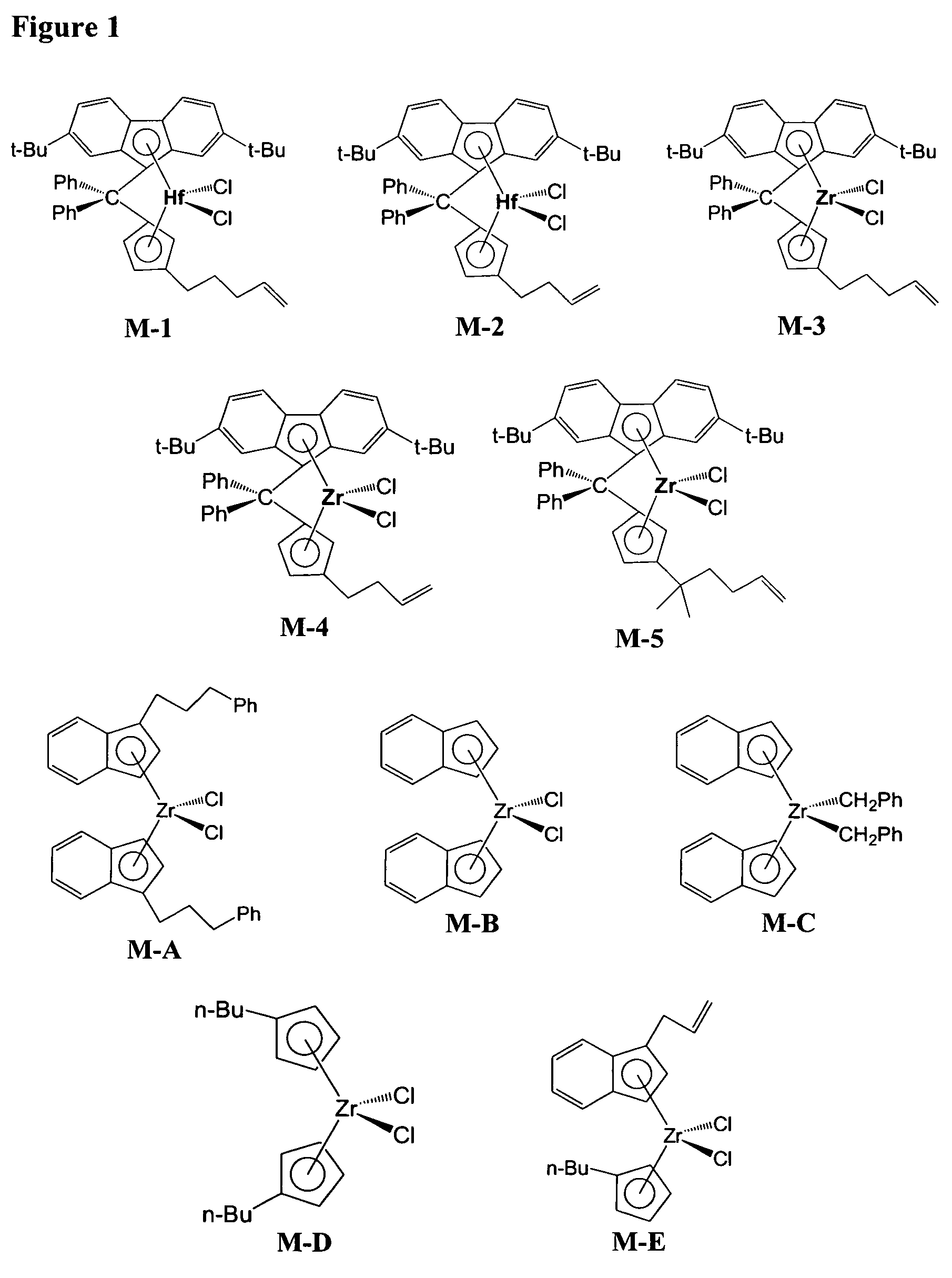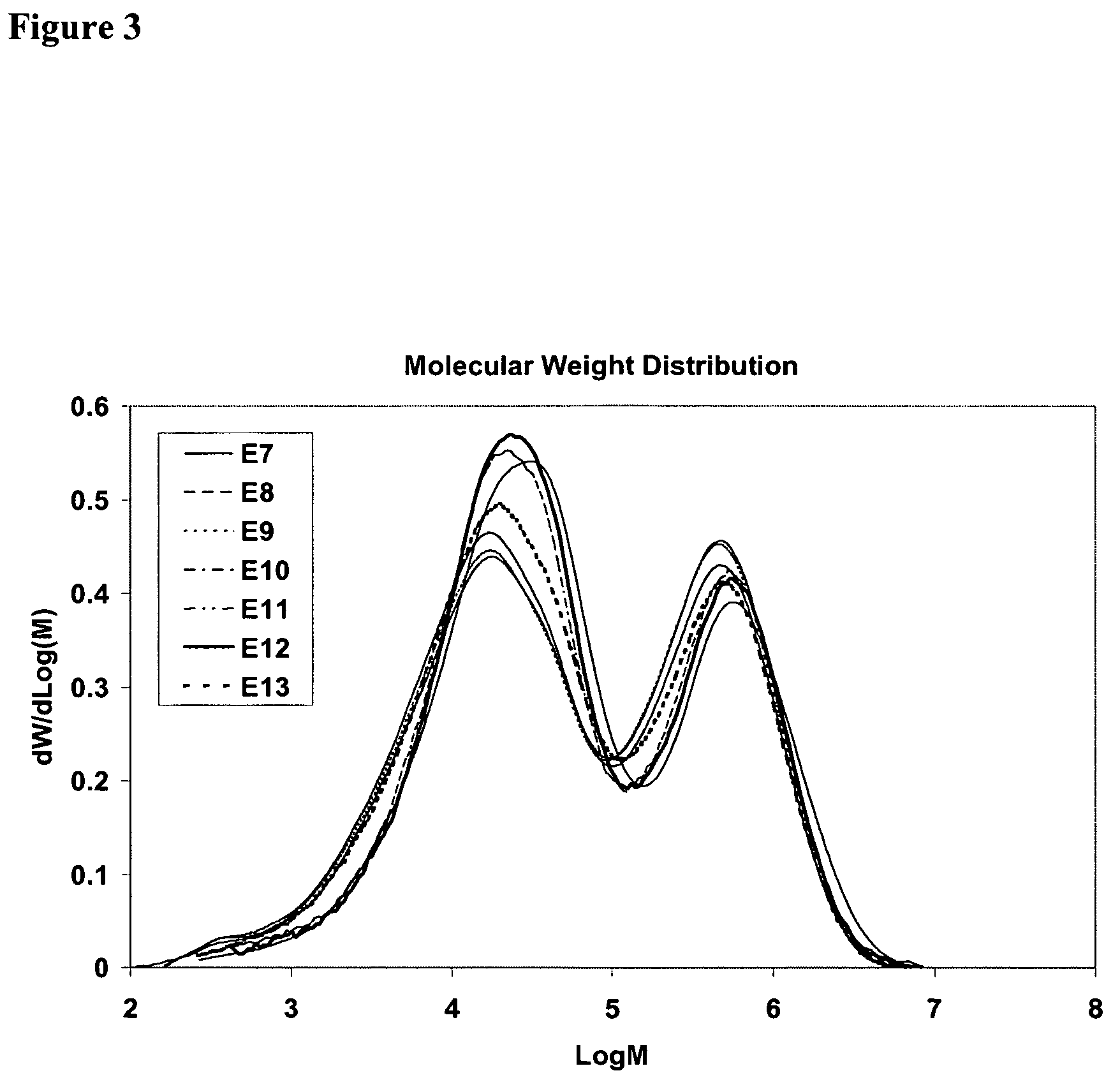Dual metallocene catalysts for polymerization of bimodal polymers
a metallocene catalyst and bimodal polymer technology, applied in the direction of catalyst activation/preparation, chemical/physical processes, group 8/9/10/18 element organic compounds, etc., can solve the problems of non-relatively high escr and conventional processes that do not produce items with relatively high stiffness and relatively high escr, and achieve good impact strength, good balance of stiffness, and slow crack growth resistance
- Summary
- Abstract
- Description
- Claims
- Application Information
AI Technical Summary
Benefits of technology
Problems solved by technology
Method used
Image
Examples
examples 1-6
Bench Scale Catalytic Runs Varying the Metallocene, Activator-Support, and Conditions
[0504]Examples 1-6 in Table 1 illustrate polymerization run data and polymer characterization data for ethylene homopolymer and ethylene-1-hexene copolymer prepared using the catalyst compositions disclosed herein. Polymerization runs were conducted in a one-gallon (3.785 liter) stainless steel reactor. Two liters of isobutane and alkyl aluminum cocatalyst / scavenger were used in all examples. Hydrogen, when added, was added slowly throughout the run and was measured as the pressure drop on a 340 mL steel cylinder. Metallocene solutions (1 mg / mL) were usually prepared by dissolving 30 mg of metallocene in 30 mL of toluene.
[0505]A typical polymerization procedure is as follows: Alkyl aluminum, SSA and the metallocene solution were added in that order through a charge port while venting isobutane vapor. The charge port was closed and two liters of isobutane were added. The contents of the reactor were ...
examples 7-13
Pilot-Plant Scale Catalytic Runs Varying the Metallocene, Activator-Support, and Conditions
[0507]Examples 7-13 (E7-E13) in Table 2 illustrate polymerization run data and polymer characterization data for ethylene-1-hexene copolymer prepared using the catalyst compositions disclosed herein. Polymerization runs were conducted as follows. A 27.3-gallon slurry loop reactor was employed as the polymerization reactor. Polymerization runs were carried out under continuous particle form process conditions in the loop reactor (also known as a slurry process) by contacting an isobutane solution of a first metallocene, having the formula indicated in FIG. 1, and a second metallocene, having the formula indicated in FIG. 1, with either triisobutylaluminum or tributylaluminum and a sulfated alumina activator-support in a 0.5 L stirred autoclave with continuous output to the loop reactor.
[0508]Precontacting was carried out in the following manner. Either triisobutylaluminum or tributylaluminum so...
PUM
 Login to View More
Login to View More Abstract
Description
Claims
Application Information
 Login to View More
Login to View More - R&D
- Intellectual Property
- Life Sciences
- Materials
- Tech Scout
- Unparalleled Data Quality
- Higher Quality Content
- 60% Fewer Hallucinations
Browse by: Latest US Patents, China's latest patents, Technical Efficacy Thesaurus, Application Domain, Technology Topic, Popular Technical Reports.
© 2025 PatSnap. All rights reserved.Legal|Privacy policy|Modern Slavery Act Transparency Statement|Sitemap|About US| Contact US: help@patsnap.com



